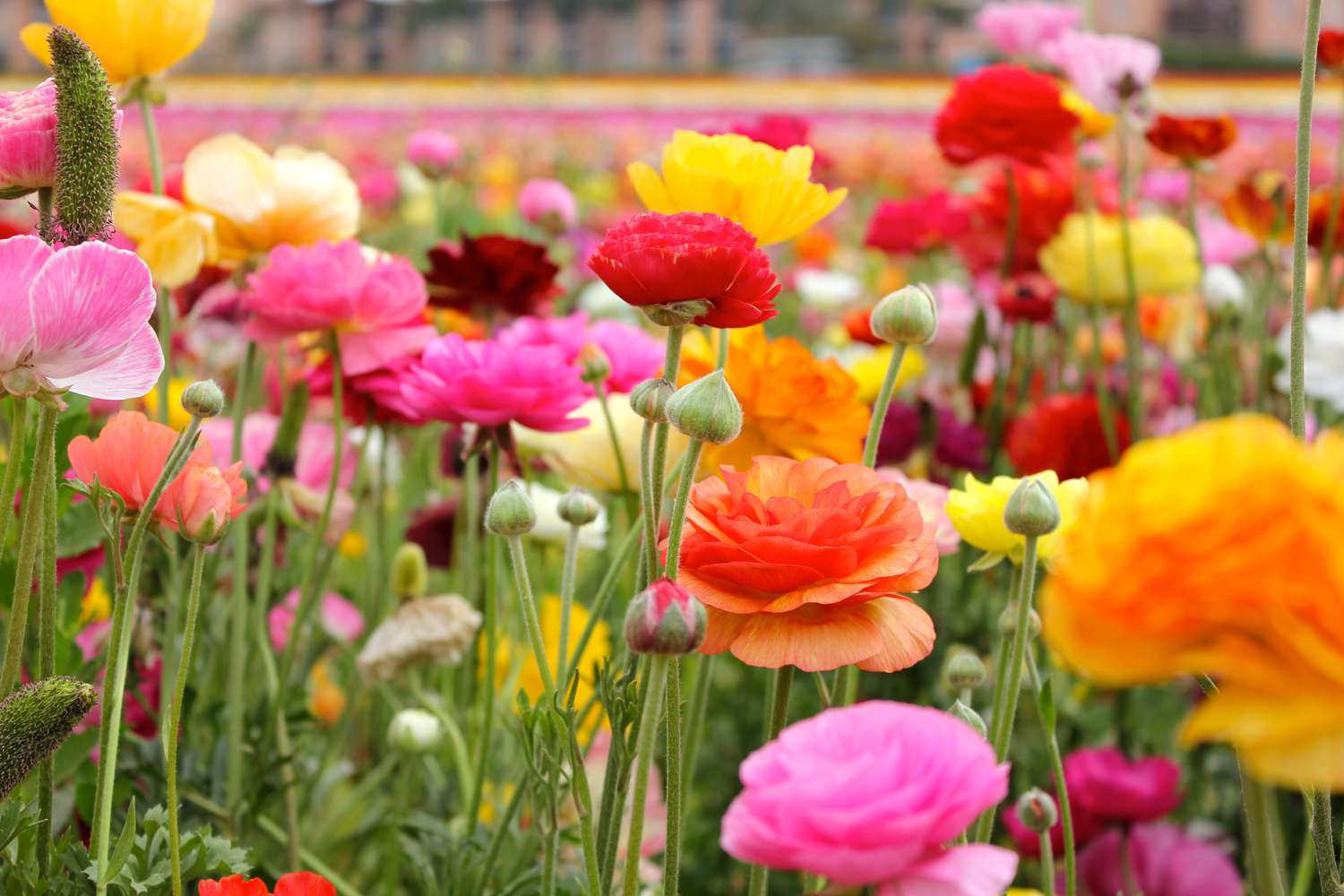
Ranunculus, also known as buttercups, are one of the most visually stunning and diverse flowers found across the globe. With vibrant colors and delicate petals, they have captured the hearts of gardeners and flower enthusiasts alike. But did you know that there is more to this captivating flower than meets the eye?
In this article, we will uncover 18 astounding facts about Ranunculus that will leave you in awe of their beauty and ingenuity. From their fascinating history to their various species and unique characteristics, there is so much to learn about these enchanting flowers. So, whether you are a nature lover, a gardening enthusiast, or simply someone who appreciates the wonders of the natural world, join us as we delve into the fascinating world of Ranunculus.
Key Takeaways:
- Ranunculus flowers come in a wide range of vibrant colors and are known for their elegance, making them a popular choice for weddings and floral arrangements.
- These stunning flowers have a unique petal structure and can be grown in various garden environments, attracting pollinators while symbolizing charm and radiant energy.
The Origin of the Name
Ranunculus, derived from Latin, means “little frog” and refers to the plants’ preference for moist habitats, just like frogs.
Wide Range of Colors
Ranunculus flowers come in a plethora of colors, including vibrant shades of red, yellow, pink, orange, white, and even bi-color varieties.
Elegance and Charm
Ranunculus flowers are known for their exquisite charm and elegance, making them a popular choice for weddings, bouquets, and floral arrangements.
Symbol of Radiant Charm
Ranunculus flowers are considered a symbol of radiant charm and are often associated with attractiveness, charm, and true love in Victorian flower language.
Propagation Methods
Ranunculus can be propagated through seeds or by dividing the tubers, allowing for effortless expansion of your garden or flower bed.
Multiple Blooms
Ranunculus plants produce multiple delicate blooms per bulb, creating a stunning display of color in gardens and floral arrangements.
Long-Lasting Cut Flowers
Ranunculus flowers have an impressive vase life and can last up to a week or more when properly cared for, making them a popular choice for cut flower arrangements.
Early Spring Bloomers
Ranunculus flowers typically bloom in early spring, adding a burst of color to gardens and landscapes after a long winter.
Buttercup Family Members
Ranunculus belongs to the buttercup family (Ranunculaceae) and shares its family traits of delicate petals and bright, vibrant colors.
Versatile Landscaping Plant
Ranunculus can be grown in garden beds, borders, containers, or even used as ground cover, providing versatility and beauty to any landscape.
Toxic to Animals
While stunningly beautiful, ranunculus plants contain toxins that can be harmful to cats, dogs, and some other animals. Keep them out of reach from your furry friends.
Intricate Petal Structure
The petals of ranunculus flowers are intricately layered, creating a unique and fascinating structure that adds to their overall beauty.
Perennial or Annual
Ranunculus plants can be either perennial or annual, depending on the species. Perennial varieties return year after year, while annuals complete their life cycle within one year.
Thrives in Sun or Partial Shade
Ranunculus plants are adaptable and can thrive in both full sun and partial shade, making them an excellent choice for various garden environments.
Symbolic Meaning
Ranunculus flowers symbolize charm, attractiveness, and radiant energy, making them a perfect gift for expressing admiration and appreciation.
Important in Floral Industry
Ranunculus flowers have gained popularity in the floral industry due to their striking appearance and versatility in arrangements for special occasions and events.
Popularity in Wedding Bouquets
Ranunculus blooms are highly sought after for wedding bouquets, as their delicate yet vibrant petals add a touch of romance and elegance to the bride’s ensemble.
Attracts Pollinators
Ranunculus flowers serve as a valuable food source for pollinators such as bees and butterflies, attracting them to your garden and aiding in the pollination process.
These 18 astounding facts about ranunculus highlight the beauty, versatility, and symbolism associated with these stunning flowers. Whether you’re a gardening enthusiast, a floral designer, or simply appreciate the charm of ranunculus, these facts offer fascinating insights into the world of this beloved flower. From their wide range of colors to their intricate petal structure, ranunculus flowers continue to captivate and inspire with their radiant beauty.
Conclusion
In conclusion, Ranunculus is a truly remarkable plant with its vibrant colors, delicate petals, and unique growth patterns. From its rich history to its various uses in different cultures, Ranunculus never fails to amaze. Whether you’re an avid gardener or simply appreciate the beauty of flowers, Ranunculus is a must-have addition to any garden or floral arrangement. Its ability to thrive in different climates and its versatile nature make it a favorite among flower enthusiasts. So, why not explore the fascinating world of Ranunculus and let its beauty brighten up your day?
FAQs
1. How long do Ranunculus flowers last?
Ranunculus flowers can last anywhere from 7 to 10 days when properly cared for. Providing them with enough water, fresh air, and keeping them away from direct sunlight can help extend their lifespan.
2. Can Ranunculus be grown indoors?
Yes, Ranunculus can be grown indoors. They require a well-lit area with indirect sunlight and well-drained soil. Growing them in pots or containers indoors allows for greater control over their environment.
3. Do Ranunculus flowers have any fragrance?
Most varieties of Ranunculus do not have a strong fragrance. However, some hybrids may have a light, sweet scent that adds to their overall charm.
4. Can Ranunculus tolerate cold weather?
Ranunculus is relatively cold-hardy and can tolerate temperatures as low as 20°F (-6°C). However, it is advisable to provide some protection, such as mulching or covering, during extreme cold spells.
5. Are Ranunculus toxic to pets?
Ranunculus contains toxins that can be harmful to pets if ingested. It is best to keep them out of reach of curious pets to ensure their safety.
6. Can I cut Ranunculus flowers for bouquets?
Yes, Ranunculus flowers make excellent additions to bouquets and floral arrangements. Their vibrant colors and intricate blooms add a touch of elegance to any arrangement.
7. How deep should I plant Ranunculus bulbs?
Ranunculus bulbs should be planted about 2 inches deep in well-drained soil. Be sure to space them about 4 to 6 inches apart to allow for proper growth and airflow.
Was this page helpful?
Our commitment to delivering trustworthy and engaging content is at the heart of what we do. Each fact on our site is contributed by real users like you, bringing a wealth of diverse insights and information. To ensure the highest standards of accuracy and reliability, our dedicated editors meticulously review each submission. This process guarantees that the facts we share are not only fascinating but also credible. Trust in our commitment to quality and authenticity as you explore and learn with us.


